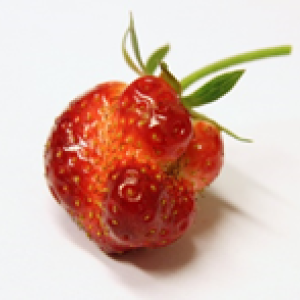
This paper describes an online choice experiment to understand consumer preferences around best-before dates, appearance, and packaging of food products; the paper specifically studies the demand for discounted ‘suboptimal’ products in the supermarket, and consumers’ willingness to use them in the home.
It is shown that consumer preferences for suboptimal products differ depending on whether the consumer is in a supermarket or at home, and depending on the type of suboptimality. Consumer behaviour towards suboptimal products was also investigated, demonstrating that ultimately most suboptimal products can be sold at discount.
The study asked participants to take part in a survey where they could earn points to spend in a hypothetical shop. They were randomly assigned to either the Home or Supermarket condition, and were given six choices between images of two products, one ‘optimal’, and one ‘suboptimal’, to select which they would prefer to consume or buy for a certain price. Suboptimal products were shown either as differing from the ideal in terms of appearance, had packaging damage, or had suboptimal date labelling.
On average, out of their six choices, participants chose one or two of the suboptimal products; with respondents in the supermarket condition selecting suboptimal products less often than those in the home condition. This paper builds on existing work by showing that consumers’ preferences for suboptimal products depend on the type of suboptimality. For example, participants seemed willing to buy a product which was misshapen, but not discoloured. The study also demonstrates that consumers are sensitive to discounts, so almost every suboptimal product can be sold, given enough of a discount.
Participants who were younger, and who did the shopping and cooking themselves were more likely to choose sub-optimal products. In the supermarket condition, it was also shown that the level of discount necessary for people to choose the sub-optimal products differed depending on demographics. Respondents required a higher discount to buy sub-optimally when they were female, older, had children or a lower education. Other traits also played a part, with participants who were less aware of the food-waste issue requiring a larger discount to buy sub-optimally.
The simulated nature of the study is its weakness, as indifference to “buying” certain suboptimal items may not play out in the real world. Also, social desirability factors may have played a part with people “wasting” less in the trial than would be expected in real life.
Abstract
Food waste has received increasing scientific and societal attention during the last decade. One important cause of food waste is thought to be the un-willingness of supply chains and consumers to sell, purchase, and consume suboptimal or imperfect foods. Yet, empirical research on this issue is scarce and contradictory. The current research investigates under which conditions consumers purchase or consume foods that deviate from regular products in terms of appearance standards, date labelling, or damaged packaging, without deviation on the intrinsic quality or safety. An online choice experiment among 4214 consumers from five Northern European countries reveals that consumer preferences for suboptimal products differ depending on whether the consumer is in a supermarket or at home, and depending on the type of suboptimality. Moreover, consumer choices, discount preferences, and waste behaviors of suboptimal products are influenced by demographics (nationality, age), by personality characteristics (value orientation, commitment to environmental sustainability, and perceived consumer effectiveness in saving the environment), and by individual-waste aspects (perceived food waste of the household, perceived importance of food waste, engaging in shopping/cooking). These findings provide important insights into consumer preferences for suboptimal products, and useful suggestions for supply-chain regulations on suboptimal products.
Reference
de Hooge, I., Oostindjer, M., Aschemann-Witzel, J., Normann, A., Loose, S. and Almli, V. (2017). This apple is too ugly for me!: Consumer preferences for suboptimal food products in the supermarket and at home. Food Quality and Preference, 56, pp.80-92.
You can read the full article here (paywall).







Post a new comment »